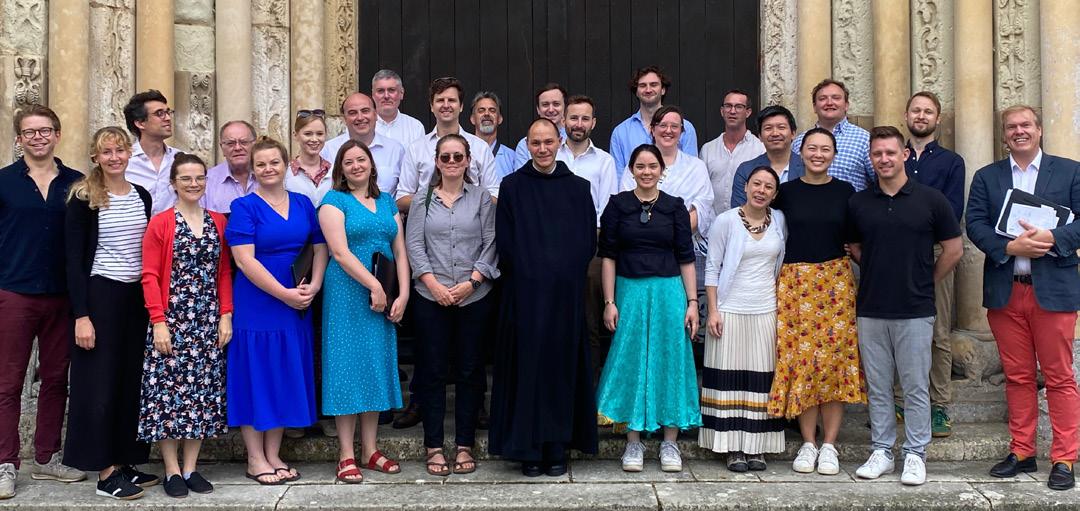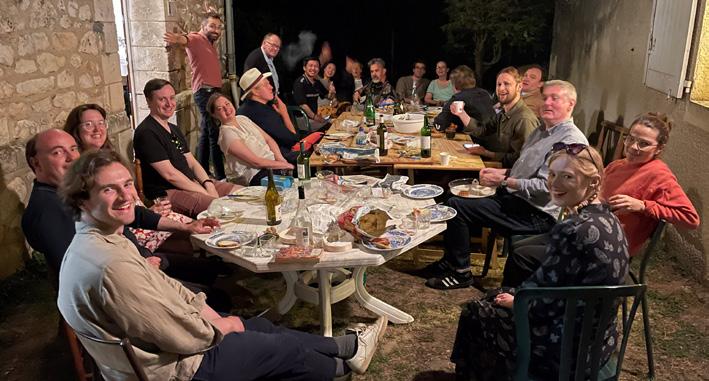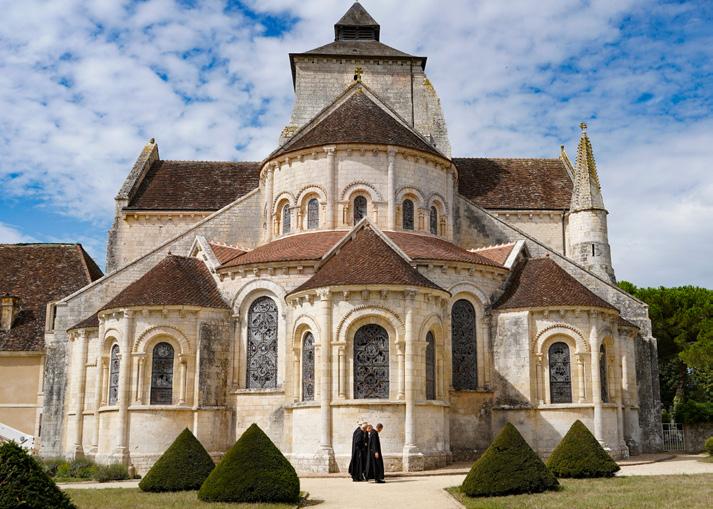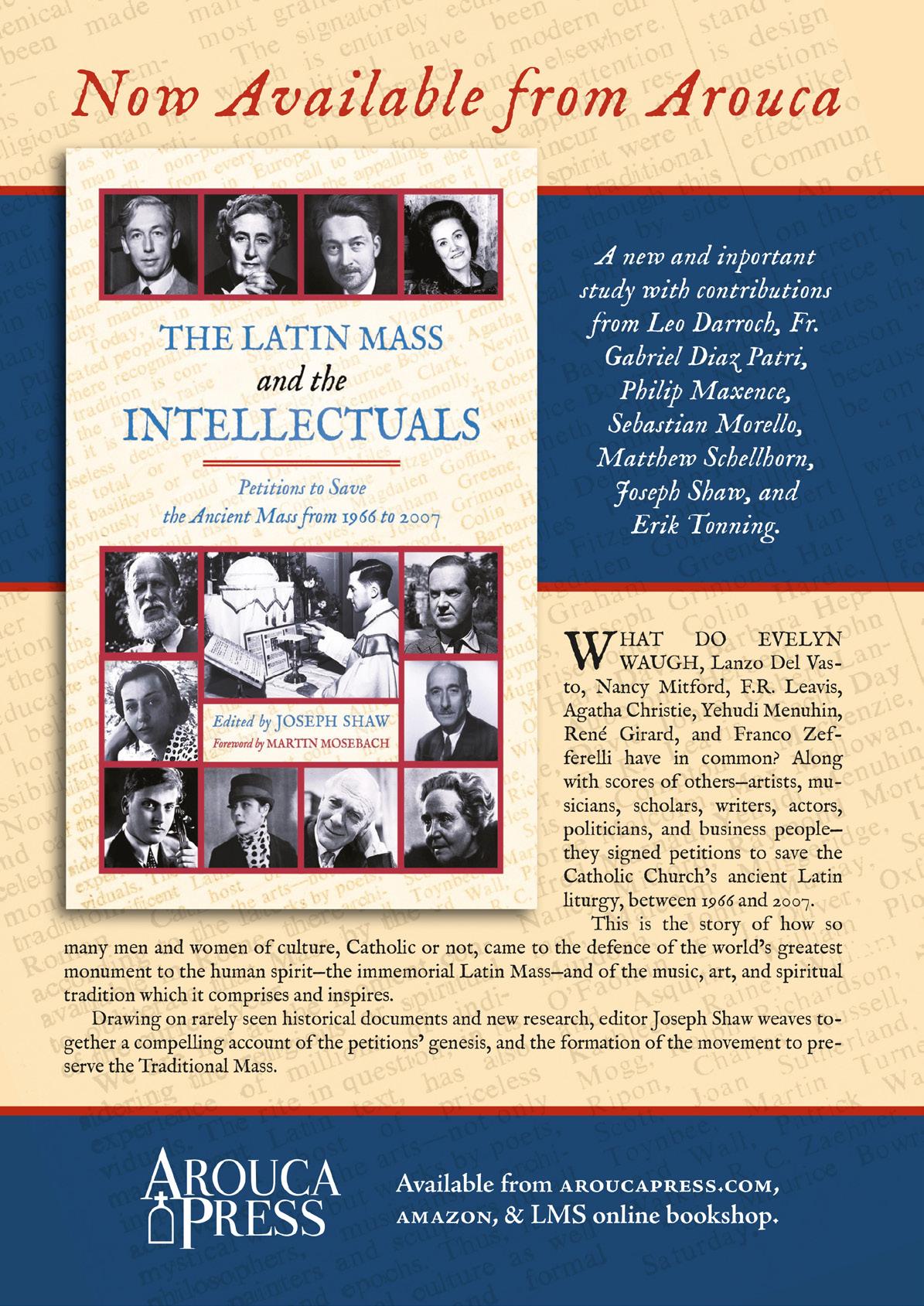
7 minute read
Peace, joy and music
Gregorian chant meets the English choral tradition at Fontgombault Abbey, as William Edwards explains
In the two years since the Southwell Consort was founded the group has come together on alternate Mondays to provide choral music for the Latin Mass at Corpus Christi Maiden Lane, in London. But it was earlier this year that our founder, Dominic Bevan, suggested something more ambitious: an overseas tour. And in the Abbey of Fontgombault, near Poitiers, he found the perfect destination. Its monks kindly offered us not only lodging and a warm welcome, but also some tuition on the finer points of Gregorian Chant, a form in which we as a choir aspire to specialise. In return, we would perform for them some of the finest works of the English choral tradition from around the time of the Reformation.
The popularity of the trip among the volunteer singers was certainly not hurt by the fact that the abbey is set in beautiful French countryside and, of course, we felt obliged to make the most of the local cuisine. In all, 26 of us made our way to Poitiers airport, whence we decanted into three minibuses and drove straight to the nearest hypermarché, arriving 15 minutes before closing time to stock up on supplies for the weekend. Rarely has so much cheese been purchased in so short a time! Arriving at Fontgombault late at night, we found the Abbey looming out of the darkness and most of the monks had turned in for the night, but we were shown to our simple yet homely accommodation, and before long cheese, wine and charcuterie were being laid out on trestle tables for a very convivial late-night supper.

The next morning, the most dedicated among us made it to 7am Matins, though I must confess it wasn’t until 10am that I made my way to the Abbey Church for Terce, immediately followed by Mass. Hearing the monastic choir for the first time, their depth of experience was evident - clearly men who devote many hours a day to their craft, from the small hours of the morning to late at night. As the grey clouds of dawn burned away, we were treated to the sight of sunlight streaming through the stained-glass windows at the east end of the Abbey, silhouetting the monastic choir through a haze of incense.
After Mass it was time to learn from the masters first-hand. Fr Jean-Baptiste Cazelle is Fontgombault’s choirmaster. Only in his 40s, he told us he has been at the monastery for 20 years already and that, surprisingly, he didn’t study music before joining the abbey. But two decades of hourly devotions have made him a master of the art form, and in less than a couple of hours between services he did his best to impart some of his skills. One of his most important precepts is always to consider the text carefully, advising us to read it through before starting to sing. Even without understanding Latin, this helps one appreciate the metre and form, the better to shape it with the music, and of course one should always translate the passage one is singing to express it most meaningfully.
Fr Jean-Baptiste was endearingly shy about demonstrating techniques to us, reminding us that Gregorian chant is almost always about the effort of the group, rather than the individual - a useful lesson for religious life too perhaps.
Those of us staying in the accommodation for married couples and women then enjoyed another hearty meal al fresco, while the single men, who were lucky enough to be staying in the abbey itself, were welcomed to lunch in the monastic refectory. Meals there are conducted in near-silence, listening to one of the monks reading from the
Rule of St Benedict or other religious texts. A particularly hospitable touch is the washing of guests’ hands by the Abbott himself.
Those unused to monastic dining among our number were surprised when the meal finished somewhat abruptly, leaving them still mid-mouthful - a mistake unlikely to be repeated!
After lunch the gentlemen were treated to a tour of the abbey grounds and church. Its exquisite Romanesque east end exterior is more than 900 years old, and while the church was a victim of several sometimes violent closures during the wars of religion and the French Revolution, it still looks as though it was built only yesterday.
Passing through the cloisters, we were shown some of the monastery’s treasures, from ornate vestments to gilded crosiers. There were peaceful vignettes wherever one glanced, from the monks’ cloaks hanging up in the filtered light of a corridor, to the small portrait of Pope Francis next to a simple altar set with ornate candlesticks and a gilded crucifix. In the Abbey Church itself we were treated to the beautiful contrast of ornate stained glass against stark Romanesque stonework
The afternoon brought a rehearsal for our evening concert, as well as an hour or so in which some of us took advantage of the clear green waters of the slow-flowing local river for a refreshing dip.
Our evening performance was attended by both the monastic community and local laity. The programme began by taking us back to pre-Reformation England with a piece by John Taverner, DumTransisset, which would have been heard in churches very much like Fontgombault up and down the land. We illustrated the era on the cusp of the Reformation, and England’s particular devotion to the Virgin Mary, with an Ave Maria by William Cornysh, the composer chosen to represent English music at the famous Field of the Cloth of Gold meeting between Henry VIII and François I.
We then turned to darker times for England’s Catholics, during which destruction, loss and martyrdom were distilled and refined into works of exceptional beauty: Tallis’s Lamentations of Jeremiah, and Byrd’s Ne Irascaris Domine are emblematic of this period. Despite the enormous persecution brought about by the English Crown, Catholic liturgical music continued, albeit often in secret - the Southwell Consort is named for St Robert Southwell, a Jesuit priest who was a friend of William Byrd’s and was martyred in 1595.
We paid tribute to those keepers of the Faith with Agnus Dei settings from Palestrina’s Missa Papae Marcelli and Byrd’s Mass for Five Voices. We ended on a more defiant and joyful note: the celebration that is Byrd’s Laudibus in Sanctis.
As the piece rang out with its epic conclusion, we paused and waited in the hope of applause - only to realise that, of course, no such thing is permitted in the Abbey Church! Nonetheless, the monks made clear their deep appreciation for this whirlwind tour of English Renaissance polyphony.
Our final morning came and went too quickly, taken up with Mass - during which we sang two anthems - then packing, lunch and, for some, a final cheeky river swim. It was already time to return to the ‘real world’ of jobs, admin and city life. Still, even though our visit had been short - perhaps partly because of it - we were all hugely grateful not only for the musical and cultural exchange we enjoyed with our monastic hosts, but also the fascinating glimpse into their prayerful way of life, whose peace and joy we will carry with us into our future musical endeavours.












